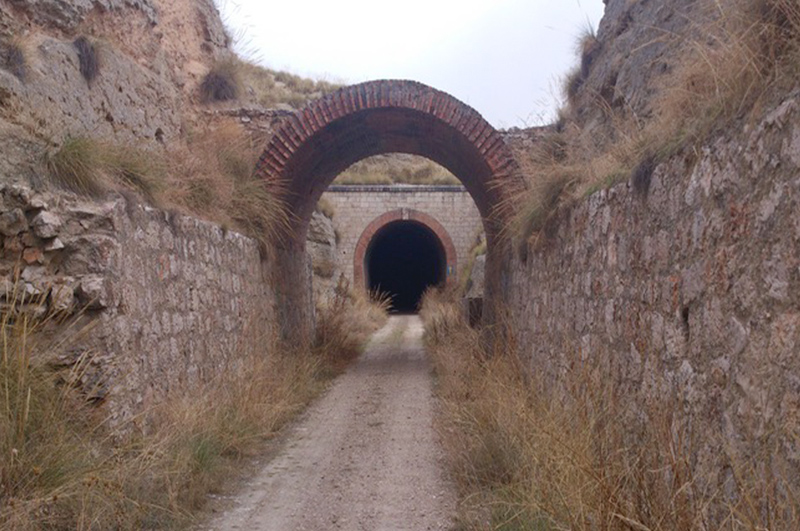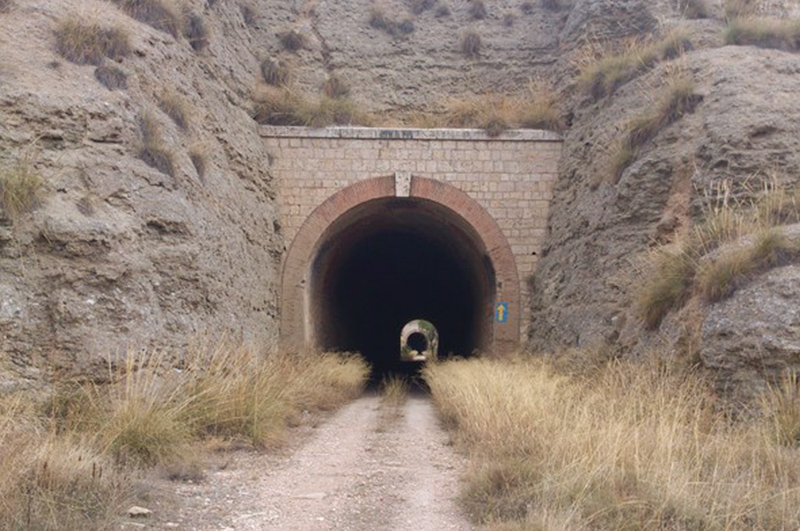There are still remains of the rail link between Torrejón and Tarancón or 40-day railroad, which was built by the government of the republic during the civil war to unite the Madrid-Zaragoza railway line, which was perfect up to the province of Guadalajara, with the Line Madrid-Valencia that was usable throughout its length except in the neighborhoods of Madrid.  The situation in Madrid was desperate, since the railroads of the north, Galicia, Extremadura and Andalusia were not usable to run through the national territory. For this reason the republican authorities were forced to order, at the beginning of 1938, the construction of that railway link known as the Railroad of the Forty Days, based on the term that the military circumstances forced to impose for its construction. In reality it was not 40 days, but three months what took in its execution, in spite of it, remains a feat taking into account both the respectable length of its layout and the precarious conditions in which it was realized. They say that because of these precarious and urgent conditions the tunnels were very low and the engineers had to pass them at full speed to avoid being suffocated by the fumes of the locomotive. This railway line went into service in March 1938 and was used until the end of the war, to supply food to the besieged capital of Spain. Once the war was over and the conventional railroad network was repaired, it was decided in 1940 to dismantle the Improved Field-Tarancón section to take advantage of the material in the reconstruction of other railway lines that were very badly damaged by the war.
The situation in Madrid was desperate, since the railroads of the north, Galicia, Extremadura and Andalusia were not usable to run through the national territory. For this reason the republican authorities were forced to order, at the beginning of 1938, the construction of that railway link known as the Railroad of the Forty Days, based on the term that the military circumstances forced to impose for its construction. In reality it was not 40 days, but three months what took in its execution, in spite of it, remains a feat taking into account both the respectable length of its layout and the precarious conditions in which it was realized. They say that because of these precarious and urgent conditions the tunnels were very low and the engineers had to pass them at full speed to avoid being suffocated by the fumes of the locomotive. This railway line went into service in March 1938 and was used until the end of the war, to supply food to the besieged capital of Spain. Once the war was over and the conventional railroad network was repaired, it was decided in 1940 to dismantle the Improved Field-Tarancón section to take advantage of the material in the reconstruction of other railway lines that were very badly damaged by the war.

Today only the trenches and the tunnels of this curious railway remain. The stretch of road that links Carabaña with Estremera was used to construct a 15-kilometer bike lane run by the Madrid Autonomous Region’s Highway Department. As for the tunnels, they were used in the 60’s to grow mushrooms because of their degree of humidity and their darkness.









